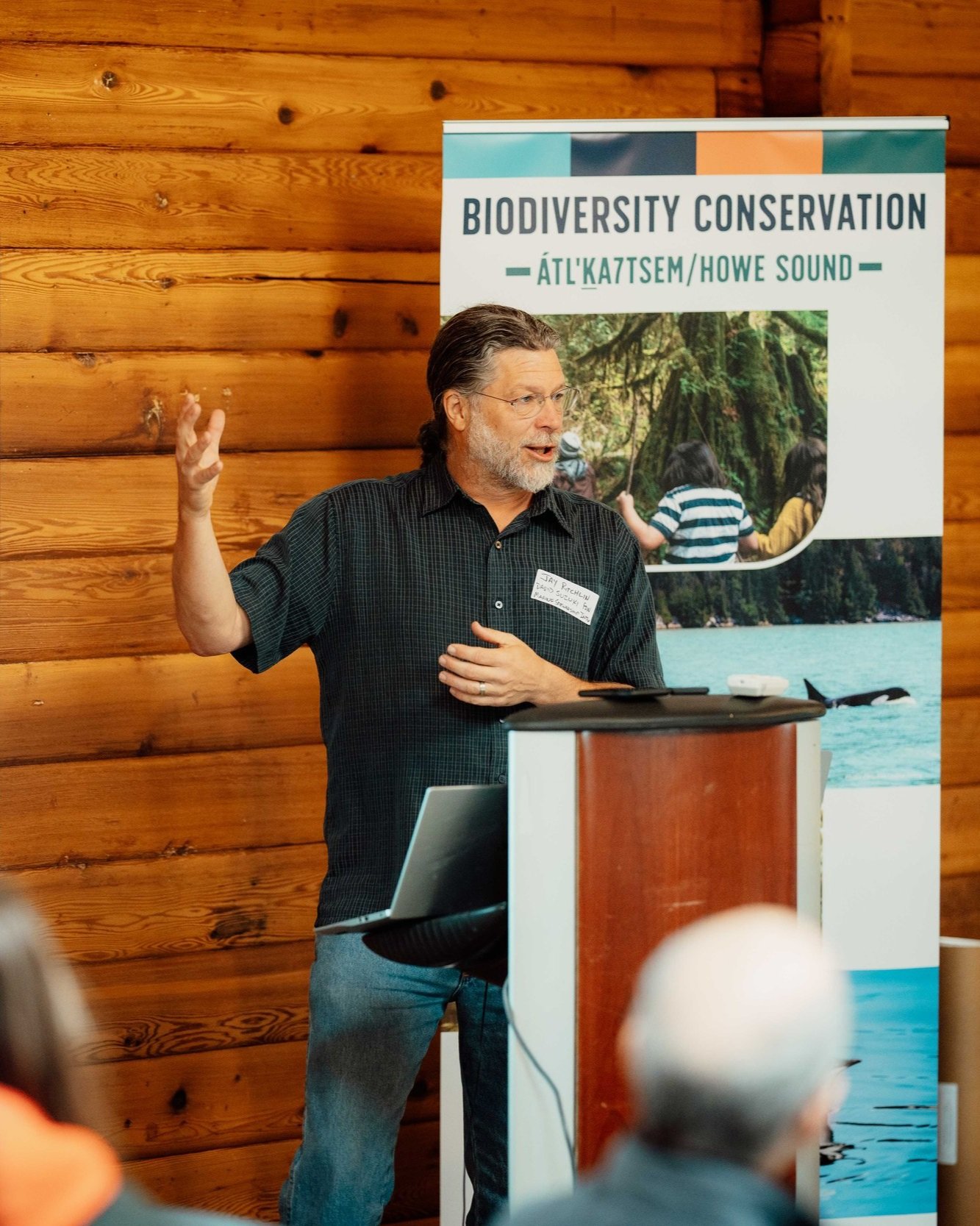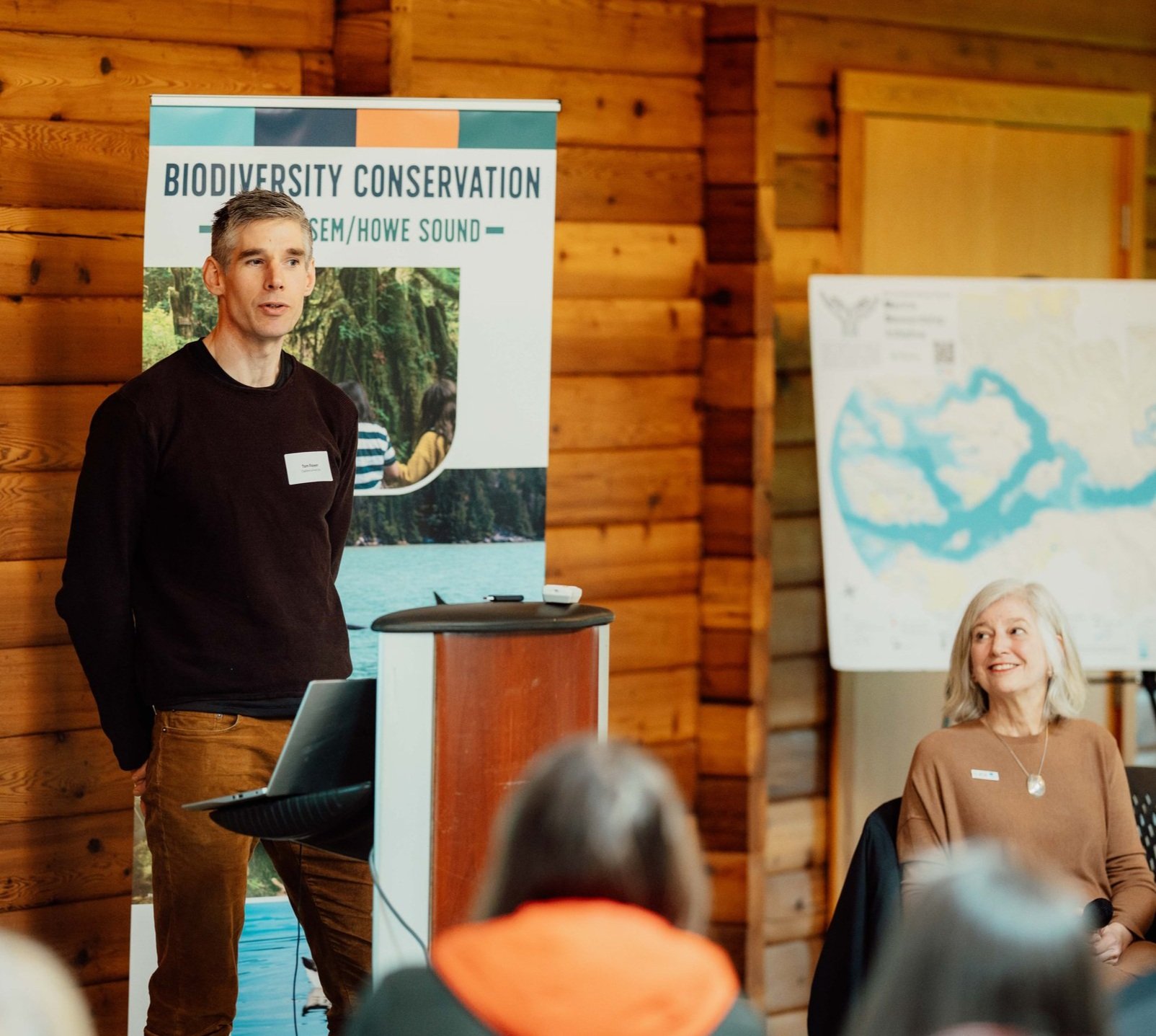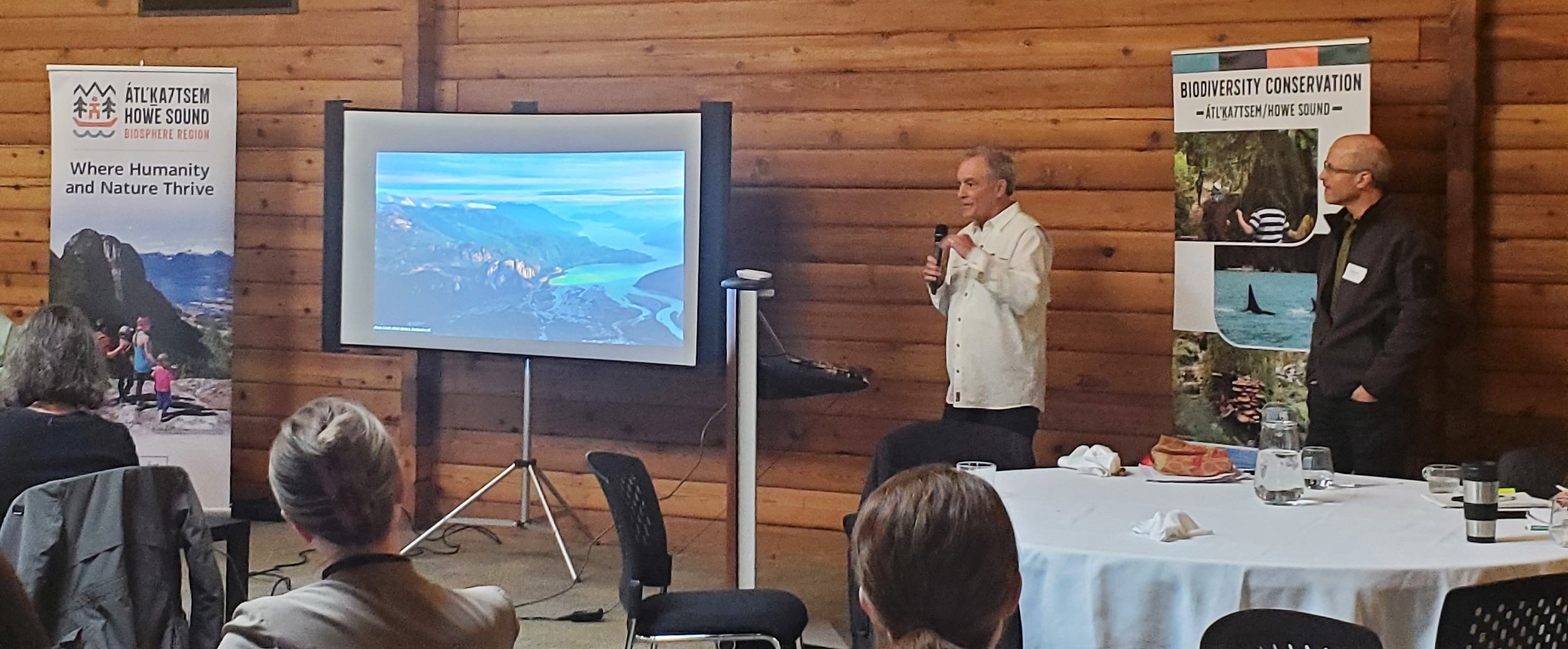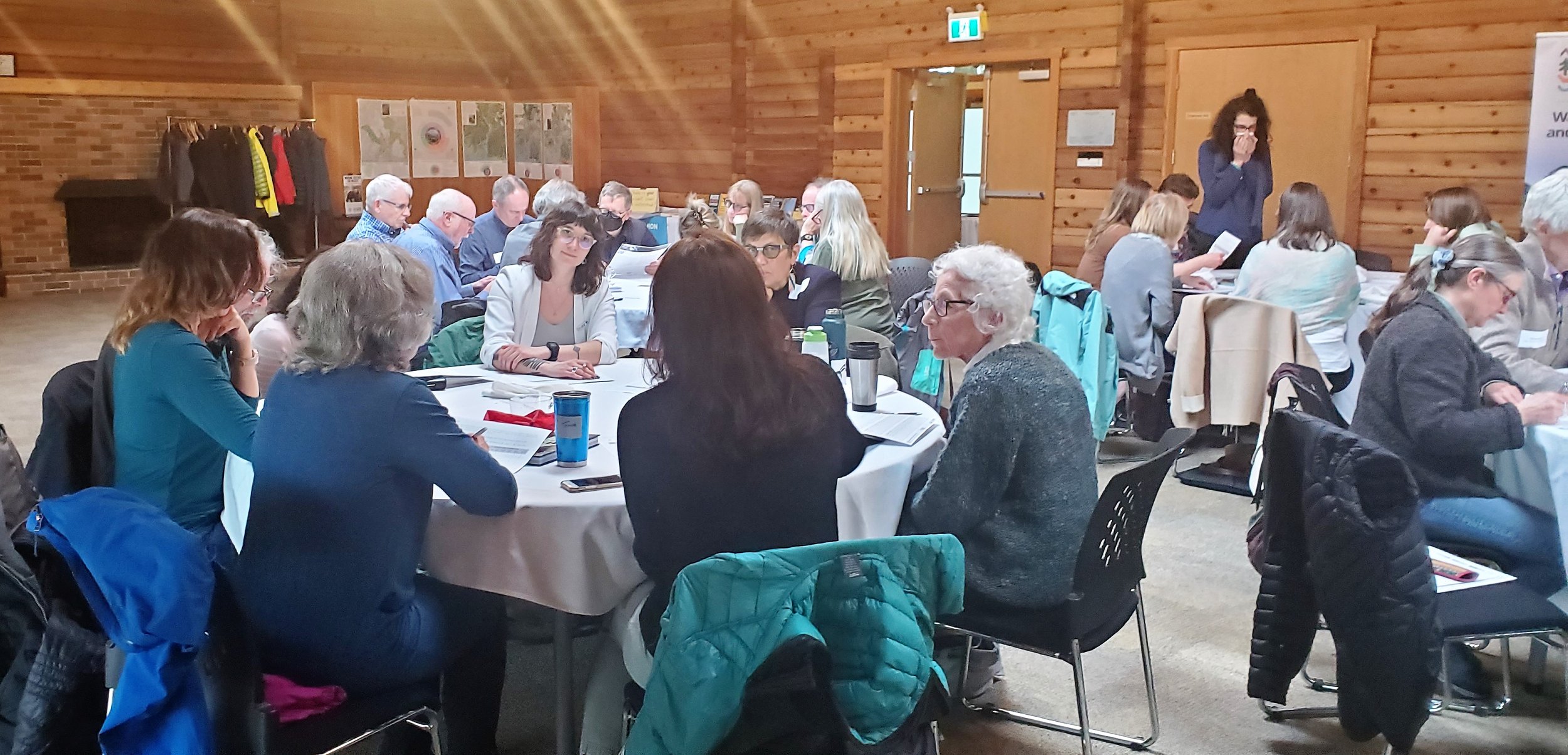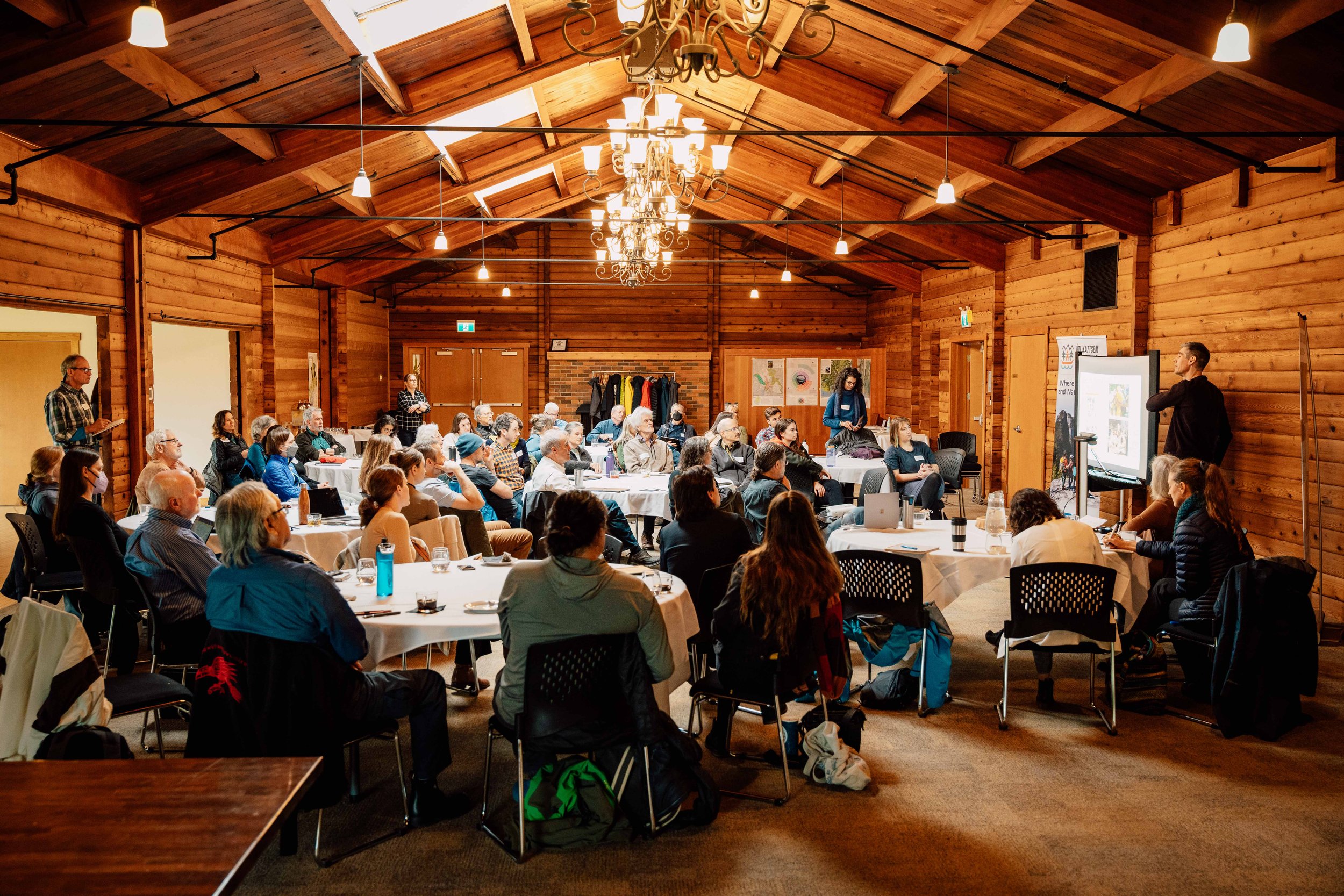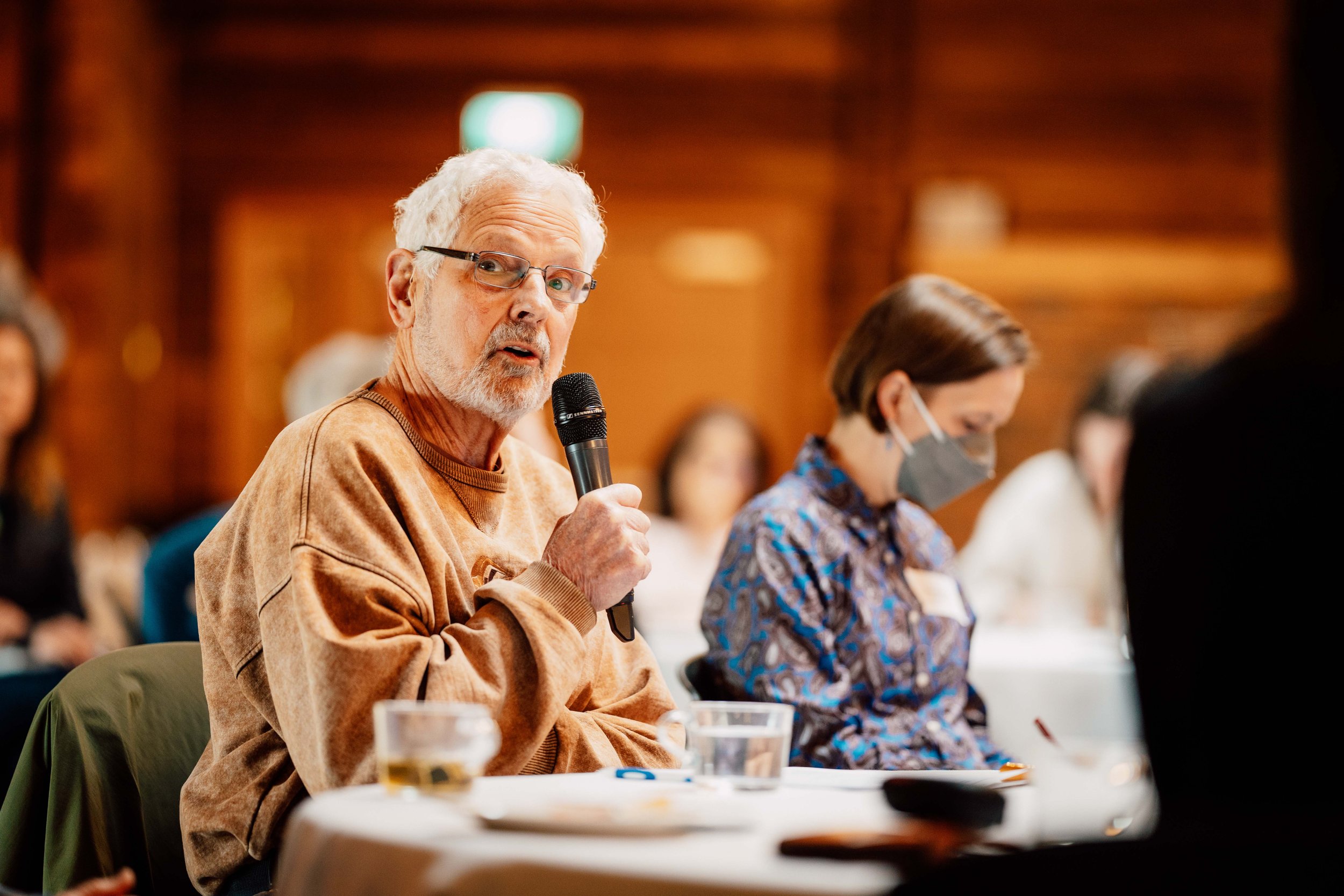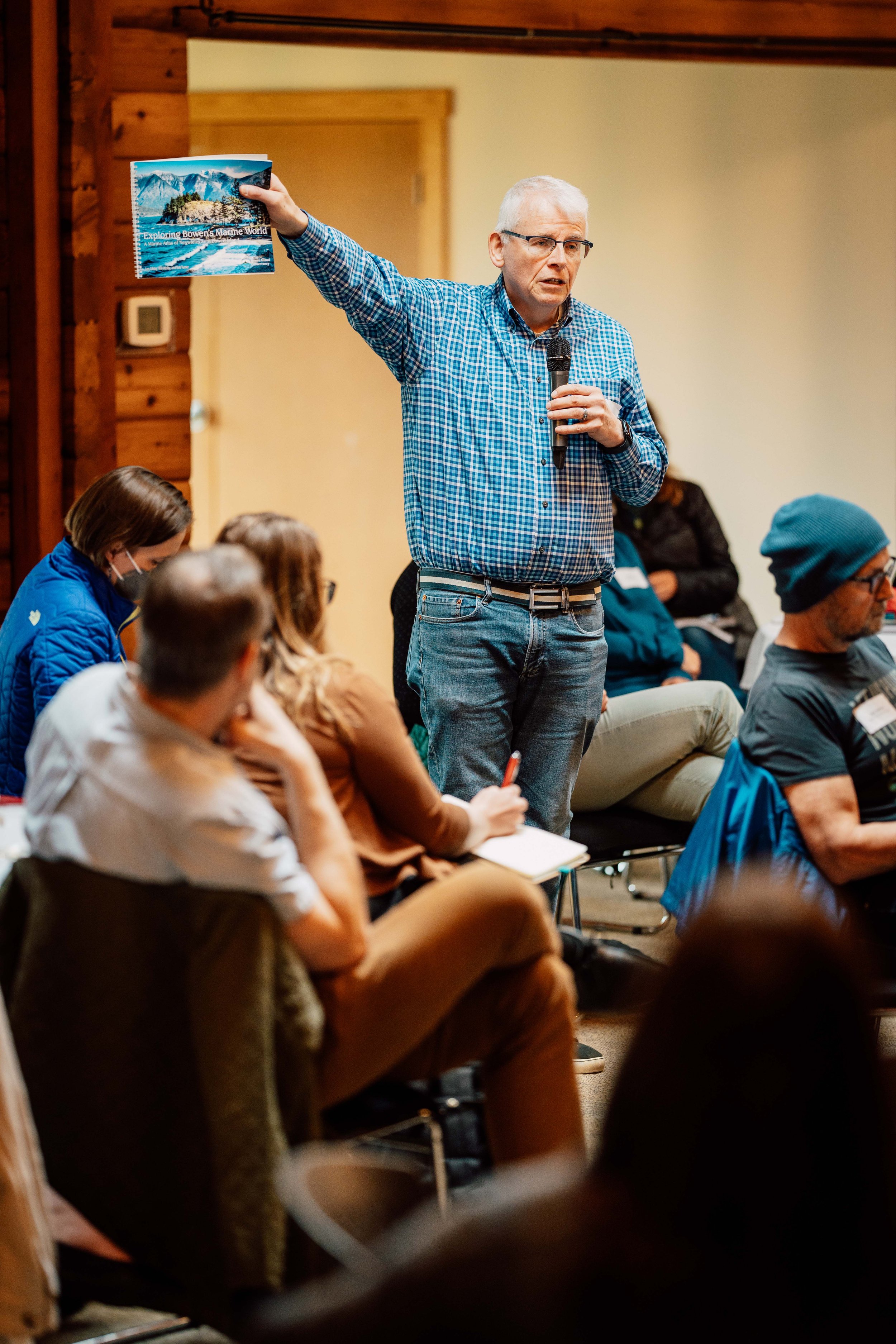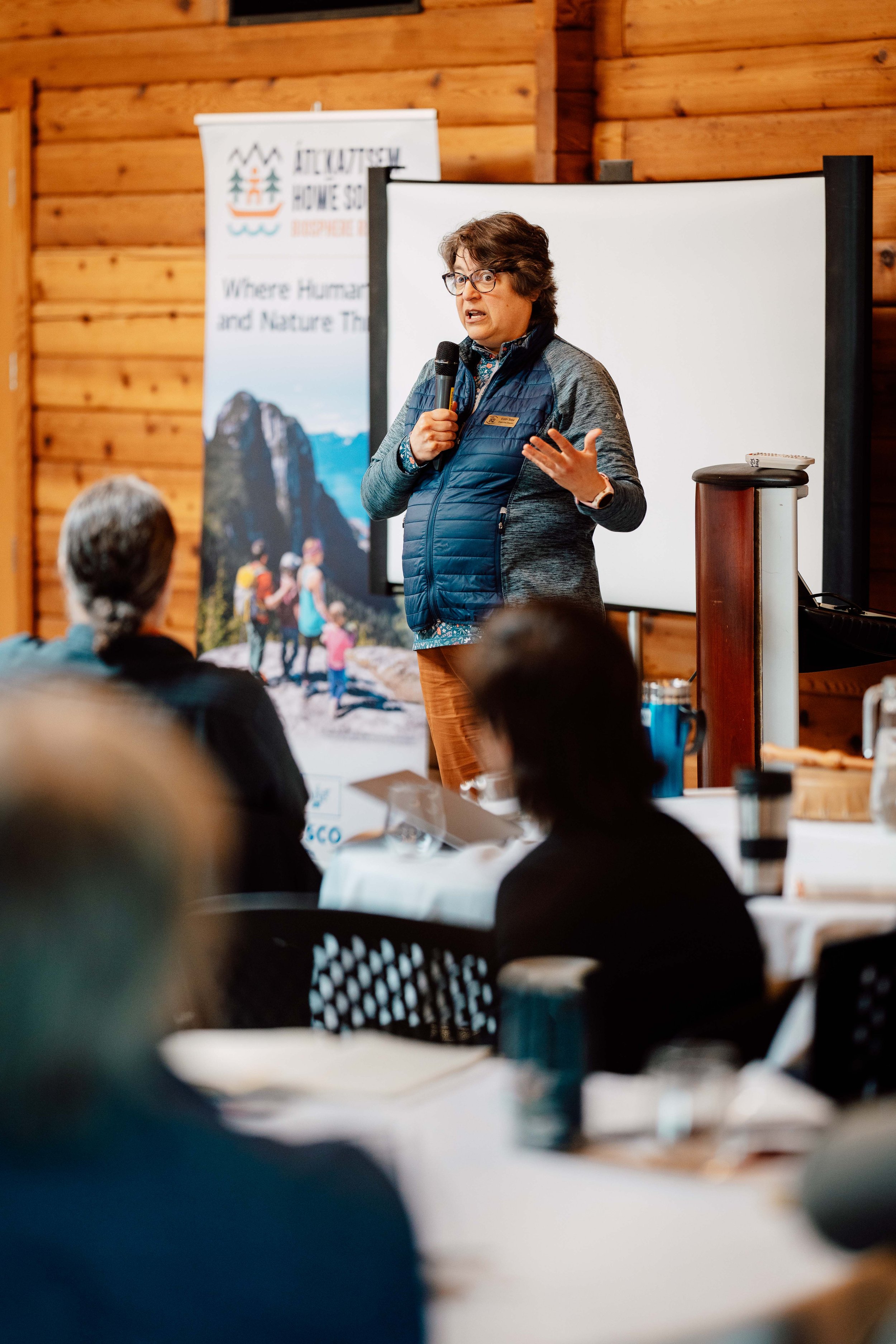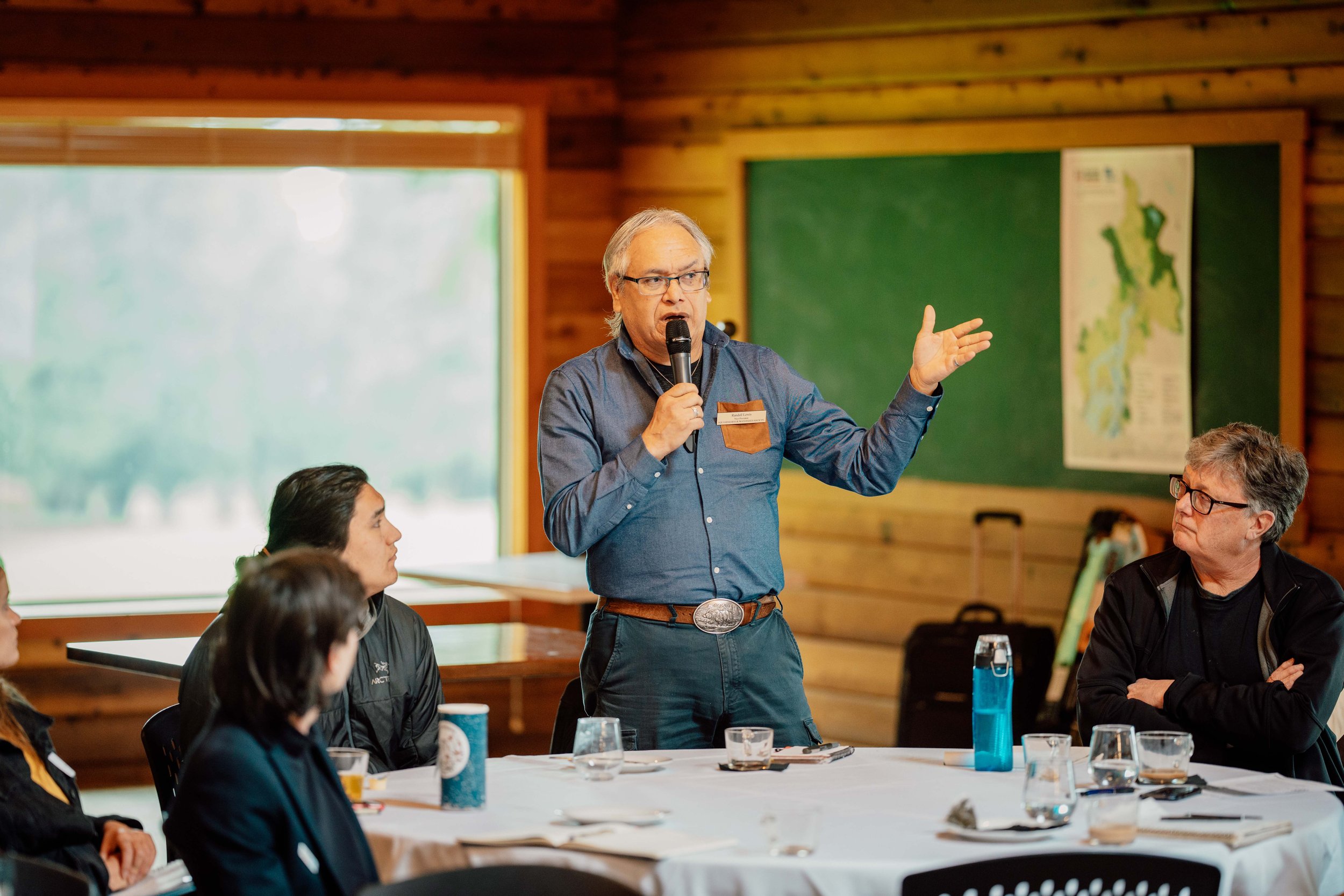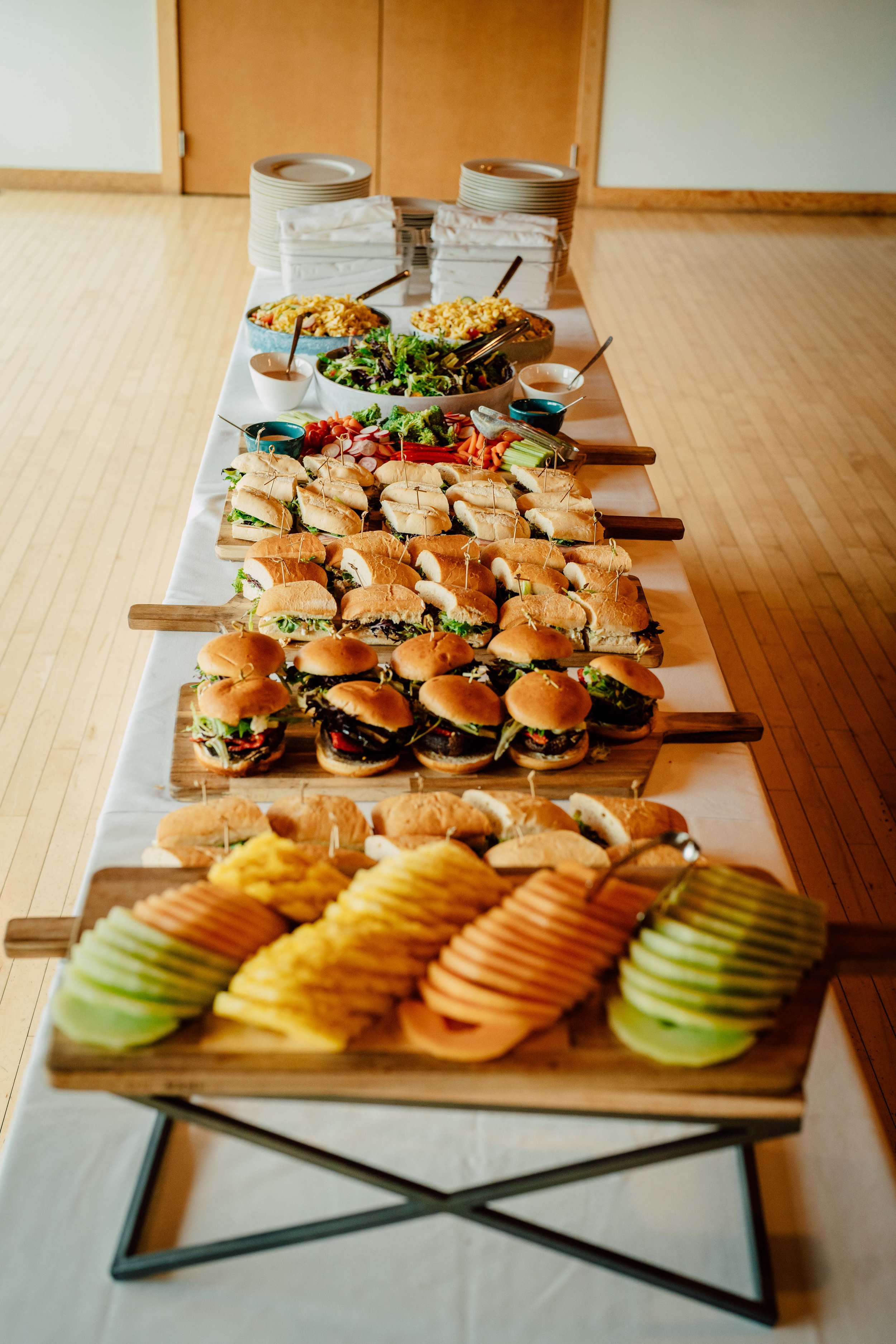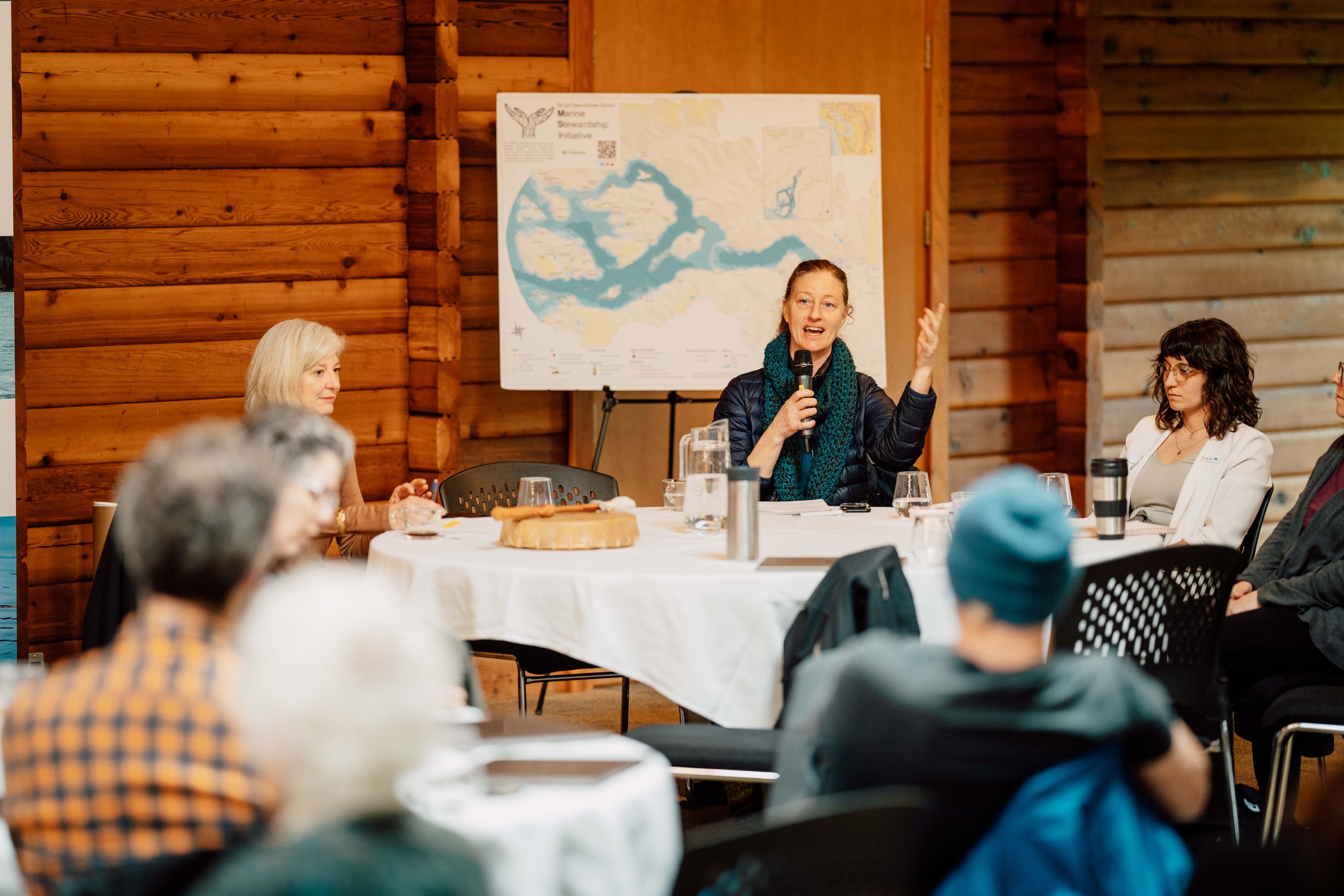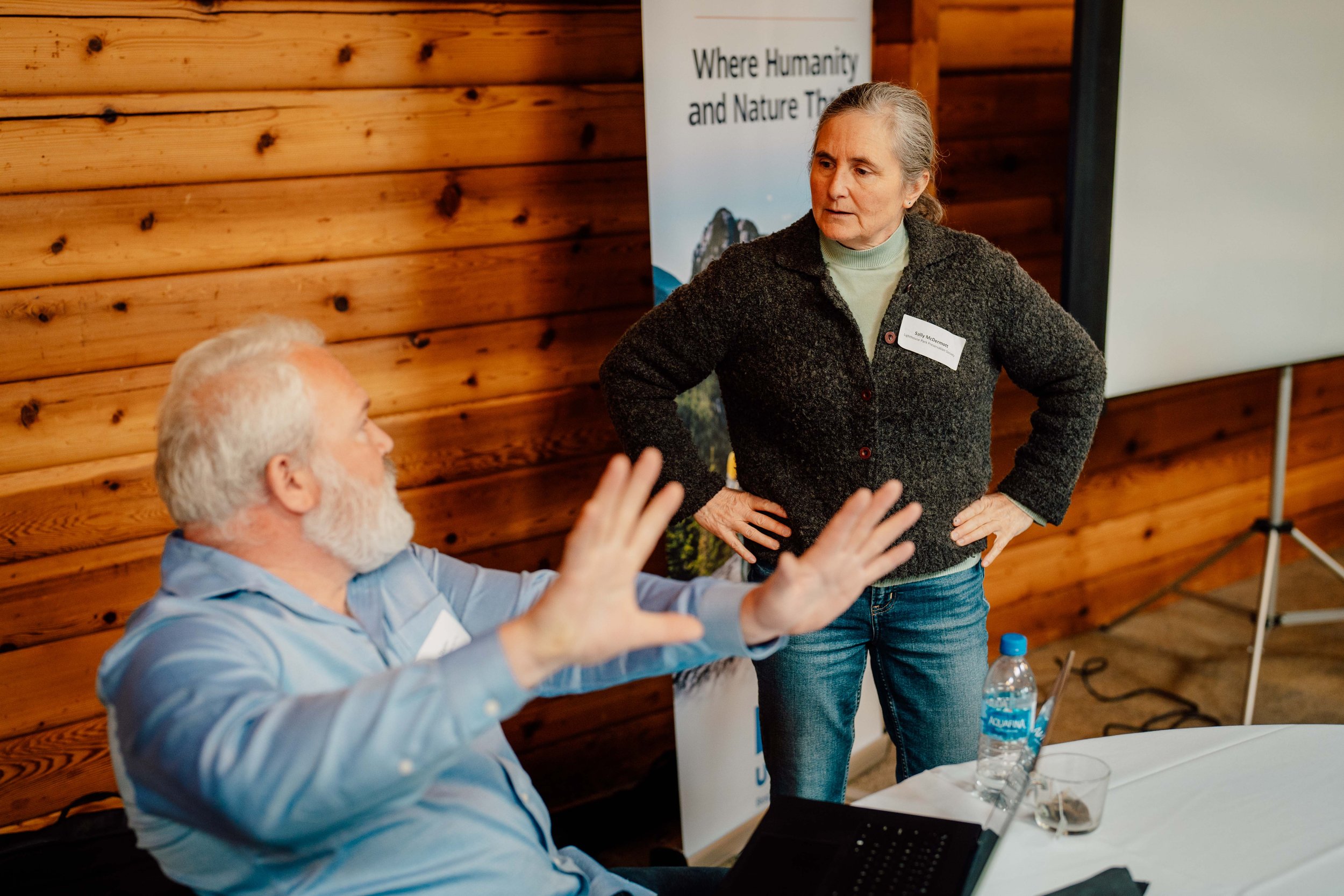Spring 2023 - Network gathering at Gleneagles West Vancouver
Photos by Erik, Cillema Productions
On March 31, 2023, the fourth gathering of the Howe Sound Conservation Network took place at the Great Hall of the Gleneagles Club House near Ch’ax̱áy̓ in West Vancouver. This year’s network event was focused on Biodiversity Conservation and was made possible with funding provided by Canada’s Nature Legacy fund.
People travelled from around the region – Sunshine Coast, Bowen Island, Keats Island, Vancouver and the Sea to Sky corridor. Organizations represented were: Squamish River Watershed Society, Squamish Environment Society, Squamish Streamkeepers, Seagrass Conservation Working Group, Squamish Climate Action Network, Sea to Sky Invasive Species Council, Marine Stewardship Initiative, Howe Sound Biosphere Region Initiative Society, Capilano University, David Suzuki Foundation, Marine Life Sanctuaries Society, Nicholas Sonntag Marine Education Centre, SeaChange Conservation Society, Sunshine Coast Streamkeepers, Sunshine Coast Conservation Association, Coastal Douglas-fir Conservation Partnership, Gambier Island Conservancy, Keats Island Conservancy, Bowen Island Conservancy, Bowen Island Nature Club, Lighthouse Park Preservation Society, Lions Bay Bird Friendly City, Lions Bay Indigenous Garden, Southcoast Conservation Program, My Sea to Sky, Sitka Foundation, District of Squamish, District of West Vancouver, UBC Botannical Gardens, UBC Okanagan, UBC.
The Howe Sound Biosphere Region Initiative Society Executive Director Ruth Simons was the M/C for the day. The day went from global goals to local actions and the role of technology in support of advancing planning for biodiversity conservation.
Jay Ritchlin, Director-General for Western Canada and Director for Nature Programs at the David Suzuki Foundation, shared his experiences and key reflections from UN Biodiversity Conference – COP 15.
Tom Flower, PhD, Instructor, Biology, Faculty of Arts and Sciences, School of STEM Capilano University spoke about messaging to youth as we face unprecedented biodiversity loss.
Andrew Simon, PhD candidate in the Department of Zoology at UBC explained shared his work on a co-creating and Integrated biodiversity assessment framework in the Átl'ka7tsem / Howe Sound biosphere region.
Conservation groups at work in the region shared their big initiatives related to education, advocacy, monitoring, research and restoration and many left with new information and relationships that can benefit future collaboration. A full report, when prepared, with links will be posted here.
Mica Anguita, the Howe Sound Biosphere Region Initiative Society’s OECM Project Director, shared a summary of the projects accomplished during this past fiscal year, many of which were in collaboration with organizations gathered in the room. Information on those projects can be found here.
After a networking lunch, Murray Journeay, with the Squamish Environment Society and Greg Kehlm of Terradapt shared information on the Squamish Wildlife Connectivity Project with a demonstration of Terradapt’s technology that assists in understanding where are the risks to regional networks of habitat for target species and ecosystems of concern, and where are the opportunities to implement conservation actions that help mitigate those risks. A roundtable working session on focal species followed and with the participation of two indigenous knowledge holders, perspectives on keystone species were shared.
The Howe Sound Conservation Network will continue to serve an important role in the collective achievement of biodiversity conservation goals for the region that aim to curb threats from biodiversity loss and ensure resiliency in the face of climate change.


